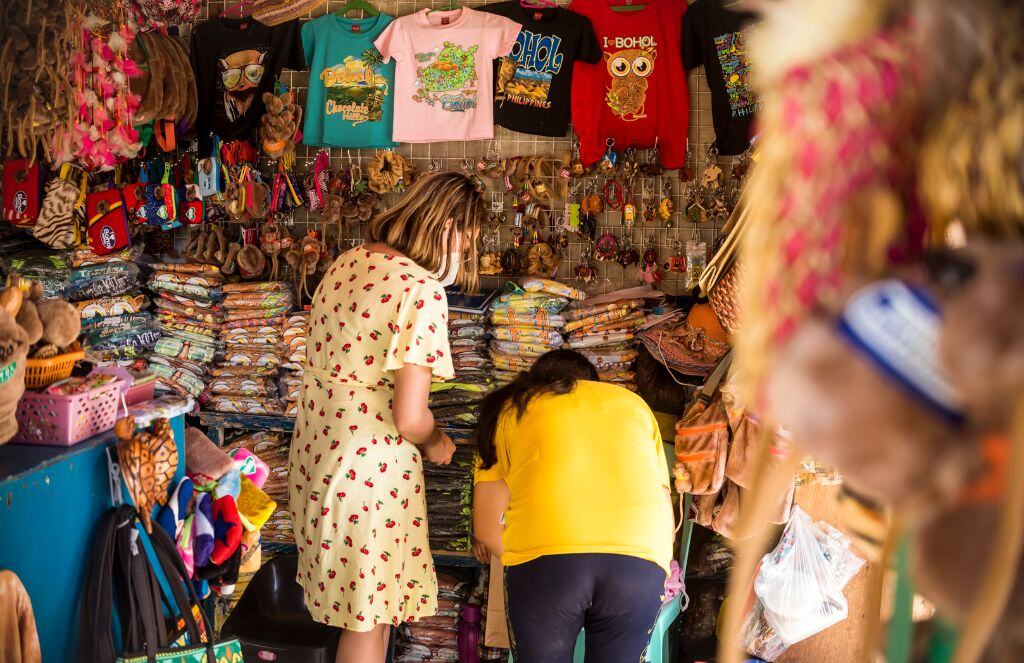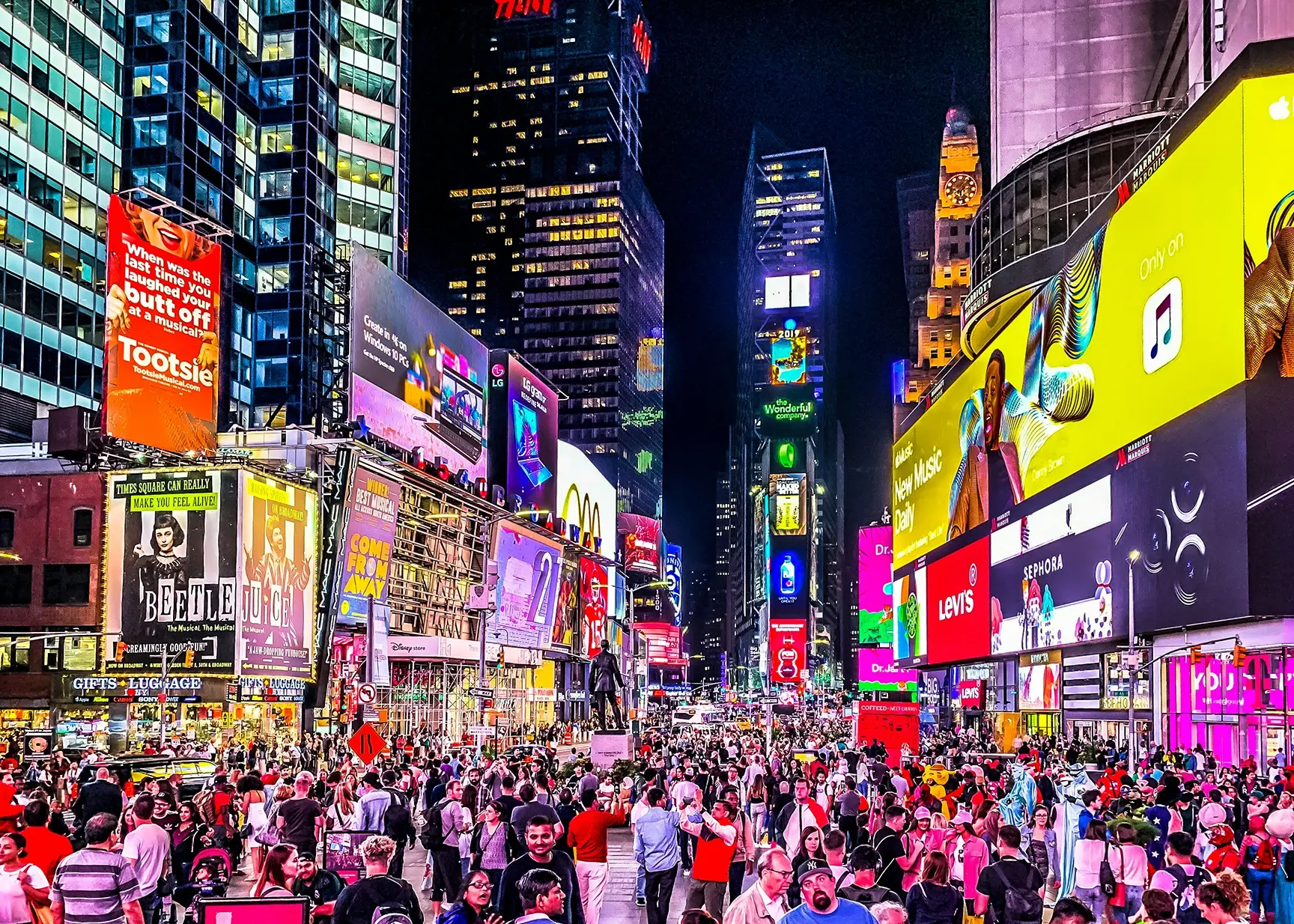💰Scratch to WIN a share of $50,000! Every customer wins. Ends Jan 31st. Learn More
How Much Spending Money for Philippines?
Whether you prefer relaxing on white sand beaches, exploring smaller towns, or diving into the hustle and bustle of city life, the Philippines is an incredibly popular tourist destination with something for everyone. But how much spending money do you need for a trip to the Philippines?
Here at Crown Currency Exchange, we've put together the ultimate guide to spending money in the Philippines. We'll look at the cost of accommodation, travel, food, activities, and more, making it easier than ever to plan your budget and help you have the holiday of a lifetime.
How Much Spending Money Do I Need for the Philippines?
The amount of Philippine Pesos (PHP) you'll need for your trip to the Philippines will ultimately depend on your spending habits and your travel style. Here's how much spending money for the Philippines you'll need per day, depending on how you like to travel:
Budget Travellers
For travellers who are looking to spend as little money as possible, a daily budget of around PHP ₱2,500 - ₱5,000 will get you a comfortable room with a host family or shared accommodation in a hostel. You'll also be able to enjoy some exquisite Filipino street food, travel using multiple forms of public transport, and enjoy activities such as sunset boat cruises on White Beach and kayaking at Big Lagoon.
Mid-range Travellers
Do you have a little more money in your budget? Put aside enough to cover PHP ₱10,000 - ₱15,000 per day, and you'll be able to stay in a budget friendly hotel, eat at some great restaurants, and travel to your destinations in a taxi. In terms of activities, with a budget like this, you'll be able to do things like take a guided tour of Intramuros or go diving at Tubbataha Reef.
Luxury Travellers
A daily budget of PHP ₱18,000 - ₱20,000 will allow you to stay in some of the most luxurious hotel rooms in the Philippines. You'll also be able to eat at five-star restaurants, hire your own car, and enjoy amazing activities like climbing the Mayon volcano. You'll also be able to hit the shops at Ay Ayala Center Cebu and pick up some amazing local products.
What Goes into a Travel Budget?
Many people struggle when it comes to budgeting for a trip abroad, but by portioning off your money into different sections, with each allocated for certain things, creating a travel budget becomes much easier! Here's what you'll need to account for:
- Accommodation Costs: You're going to need somewhere to stay throughout your trip to the Philippines. However, the amount you need to budget for will depend on where you want to stay, as prices vary widely depending on whether you're looking for budget or luxury accommodation.
- Food & Drink: No trip to the Philippines is complete without trying some traditional food. Again, the amount you'll need to allocate to this portion of your budget will depend on where you want to eat.
- Transport: Flight costs aside, you'll need to think about how much it is going to cost to get around the Philippines in order to see the country and take part in some awesome activities.
- Activities: A good portion of your budget should go towards enjoying some activities while you're in the Philippines, too.
- Other Costs: From travel insurance costs to visa fees, it's important to think about some of the things you'll need to pay for before your trip in order to make sure things go as smoothly as possible.
What is the Cost of Accommodation in the Philippines?
- Budget Travellers: The lowest-cost accommodation in the Philippines is hostels and Airbnb rooms, which cost between PHP ₱200 and ₱430 per night.
- Mid-range Travellers: A budget hotel is a good option for those wanting more privacy, and this will cost an average of PHP ₱3,300 per night.
- Luxury Travellers: For those looking for as much luxury as possible, you can get a room in a five-star hotel or beach resort for around PHP ₱7,200 per night.
Different Accommodation Options:
- Hostels: Staying in a hostel is a great way of keeping things low-cost when you're planning a trip to the Philippines, with the average price coming in at around PHP ₱430 per night. However, hostels aren't as common in the Philippines as in other countries, and places can fill up quickly in the peak season.
- Airbnb: With spaces in hostels being hard to come by, another good way of saving money on accommodation costs is to rent a room with a host family on Airbnb. The average price of this is PHP ₱200, so it's also cheaper than a hostel, and you'll get some more privacy.
- Budget Hotels: Budget accommodation doesn't necessarily need to be shared, and you can get really nice budget hotel rooms in the Philippines for PHP ₱3,300 per night. This will give you some private space and your own bathroom and will likely also include breakfast.
- Luxury Hotels: Beach resorts and luxury city hotels are popular accommodation options for people who prefer the ultimate in comfort. They do come with a higher price, however, costing an average of PHP ₱7,200 per night.
Our Money-Saving Tips for Accommodation Costs:
- Research Homestay Websites: Staying with a host family is the cheapest way of getting accommodation in the Philippines. However, Airbnb isn't your only option for this, and you may find competitive rates on similar sites like Agoda and 9Flats.
- Visit Off-Season: Accommodation costs fall during the low season of June-September in the Philippines. Not only will you save money by visiting at this time of year, but you'll be able to upgrade your usual accommodation option for a lower cost.
What is the Cost of Food in the Philippines?
There are loads of food and drink options in the Philippines, each of which serves a variety of traditional Filipino dishes. Where you'll be able to eat will depend on how much you've allocated for food in your budget, but there is still a great option for everyone.
- Food Stalls: Most of the food stalls in the Philippines can be found in Manilla, and here you'll find everything from adobo (stewed meat with soy sauce, peppercorn, and bay leaves) to more familiar dishes, like sandwiches. Prices vary between dishes, with the average cost coming in at PHP ₱140 per dish.
- Restaurants: For those who prefer to sit down for a meal, a trip to a Filipino restaurant is a good option. Budget friendly restaurants will charge around PHP ₱600 for a three-course meal, while a meal in a five-star hotel will cost around PHP ₱1000 per course.
- Drinks: Drinks are inexpensive in the Philippines, and you can get a glass of juice for just PHP ₱5. Hot drinks are just as inexpensive, costing an average of PHP ₱2.40 for a cup of coffee. Alcohol, on the other hand, is much more expensive in comparison and you can expect to pay as much as PHP ₱45 for a bottle of beer.
- Groceries: Compared to some other countries, grocery prices in the Philippines are inexpensive, and you can get an entire day's worth of food for just PHP ₱57 per person.
Our Money-Saving Tips for Food Costs:
- Visit Wet Markets: While convenience stores mark up products to higher prices, Filipino wet markets offer fresh produce for lower costs. It's worth doing some research first, however, as hygiene standards differ between markets.
- Cook Your Own Meals Where Possible: With the cost of groceries in the Philippines being so low, a great way to save money is to cook your own meals where you can. Shared accommodation will likely have cooking appliances you are allowed to use, and preparing your own breakfast and packed lunch means you'll only need to think about the cost of what you're going to eat later in the day.
What is the Cost of Transport in the Philippines?
As the Philippines is made up of over 7,000 islands and is quite sparsely populated, you'll need to think about how you're going to get from place to place. Luckily, you have a few options:
- Buses: There are several bus routes running throughout the Philippines, with more in higher-populated areas. Bus tickets are pretty cheap, averaging around PHP ₱60 for a short trip and a longer journey costing around PHP ₱130.
- Jeepneys: A Jeepney is essentially a cross between a minibus and a taxi that can fit up to 9 people. They are also one of the most popular forms of public transportation in the Philippines, and prices start at PHP ₱9 and continue to rise throughout the journey.
- Tricycles: Another popular way of getting around in the Philippines, tricycles are ideal for shorter journeys in larger cities. Much like a Jeepney, the costs grow depending on your destination, starting at around PHP ₱10.
- Taxis: Referred to throughout the Philippines as "Habal-habal", a taxi is a super convenient and quick way of getting around. Slightly more expensive than most other options, the average price of a taxi ride is PHP ₱70 per 5km.
- Car Hire: Some people prefer to work to their own time frames rather than depend on public transportation, and in this case, hiring a car is a good idea. Car rentals in the Philippines cost around PHP ₱1500 per day, but prices will depend on the type and size of car you need.
Our Money-Saving Tips for Transportation Costs:
- Buy A Monthly Bus Ticket: For PHP ₱600, you can get unlimited bus travel throughout the Philippines for an entire month. This is ideal if you're planning to visit loads of different areas.
- Travel In A Group: Whether you're on a family holiday or you make friends at your hotel, you can save money by travelling in a group and splitting the cost of a taxi or Jeepney.
What is the Cost of Activities in the Philippines?
Whether you want to spend your days relaxing on the beach, visiting historical sites, or are more of a thrill-seeking adventure sports lover, the Philippines has an activity for everyone. Here are the average prices for some of the most popular activities:
- Go Diving At Tubbataha Reef: Discovered in the 1970s, the Tubbataha Reef is home to beautiful marine animals, including turtles and manta rays. A day's guided diving costs around PHP ₱2,750 for three hours.
- Visit Intramuros: One of the most important historical sites in the Philippines. Intramuros was the seat of power during the Spanish Colonial rule and is the only remaining feature of Manila's old district. You can take a walking tour of this incredible site for PHP ₱3,000.
- Rent A Kayak At Big Lagoon: Also known as Miniloc Island Lagoon, Big Lagoon is located in Palawan and has beautiful, crystal-clear water that is just begging to be explored. For PHP ₱300, you can hire a kayak for two hours and immerse yourself in the lagoon's beauty.
- Go Shopping At Ayala Center Cebu: As its name suggests, this shopping centre is located in Cebu City and has a plethora of local and international stores to pick up a souvenir for yourself or your loved ones. It's also free to visit, so it is perfect for the low-budget traveller looking to do some window shopping.
- Climb Mayon Volcano: Located in Luzon, Mayon Volcano is regarded as the world's "most perfect volcano", thanks to its symmetrical, conical shape. For PHP ₱7,200, you can take a guided walk up this 8,000ft active volcano.
- Relax At White Beach: The most popular beach in Boracay, White Beach has namesake white sand that stays cool in hot weather and offers some amazing sunset views. You can head out on the water and get another view on a sunset cruise for just PHP ₱1,000.
Our Money-Saving Tips for Activity Costs:
- Book Multi-Day Trips: Some activities, such as climbing Mayon Volcano, take a few days to complete. So, while they may be a little more expensive up front, your money goes further as you're paying for more fun.
- Book Local Activities: By not venturing out too far from your base, you won't have to worry about travel expenses and, instead, can leave more money in your activity fund. You'll also get to know some friendly locals!
Other Expenses to Consider for the Trip
So far, we've covered the exciting things you need to think about when planning your travel budget. But what about the boring, hidden expenses you need to allow for?
- Travel Insurance: While it isn't the most glamorous thing to think about, getting travel insurance is really important as it will cover your medical expenses should you fall ill, as well as any costs incurred through lost luggage or cancelled trips.
- Visa Fees: You're going to need to apply for a visa a few weeks ahead of your trip to the Philippines, so a portion of your budget will also have to go towards that.
- Buffer Money: No matter how well you think you've budgeted, it's a good idea to leave some buffer money in your budget, too. This will cover unexpected costs, and even if you don't use it, you'll have a little more to play with towards the end of your trip.
Most Cost Effective Way to Take Philippine Pesos to the Philippines
Without a doubt, the most cost-effective way of taking Philippine Pesos (PHP) to the Philippines is in cash. While most places will accept card payments, your bank is likely to charge you international transaction fees for any payments you use your card for, which can easily eat into your carefully planned out budget.
To find out more about buying Philippine Pesos (PHP), visit Crown Currency Exchange at one of our conveniently located stores. With no commission and no fees, you'll get competitive exchange rates guaranteed. Our knowledgeable and friendly team can handle small and large transactions alike, and we have over 80 currencies available with cash in store.
FAQs
Is the Philippines expensive?
The Philippines is one of the least expensive countries to visit. However, the amount of money you'll need to budget for will ultimately depend on your accommodation preferences, where you want to eat, and what you want to do.
What currency is used in the Philippines?
Philippines Pesos (PHP) is the currency used in the Philippines.
Can I use my card to pay for products in the Philippines?
Most places in the Philippines will accept card payments. However, your bank is likely to charge international transaction fees, so it's always best to take cash with you instead.








